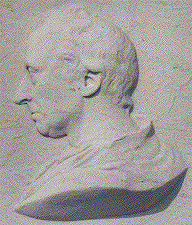Laurence of Lindores
The first philosopher recorded at the University of St Andrews
was the first Master of the College of St John, Laurence of Lindores.
He was born probably in the 1370s, studied at the University
of Paris from 1393, and died after 1438. He was the leading figure
in the University of St Andrews in its early days (it was founded
in 1413), Principal Regent of Pedagogy and Rector and Governor
of the University. He was the Papal Inquisitor of Heretical Pravity
in Scotland, whose main job was to root our heresy and who is
now mainly remembered for burning heretics. His works were widely
read in Continental universities over the succeeding one hundred
years and were Copernicus' source of knowledge of medieval physics.

Nicholas Copernicus

annual Kate Kennedy procession through
St. Andrews.





